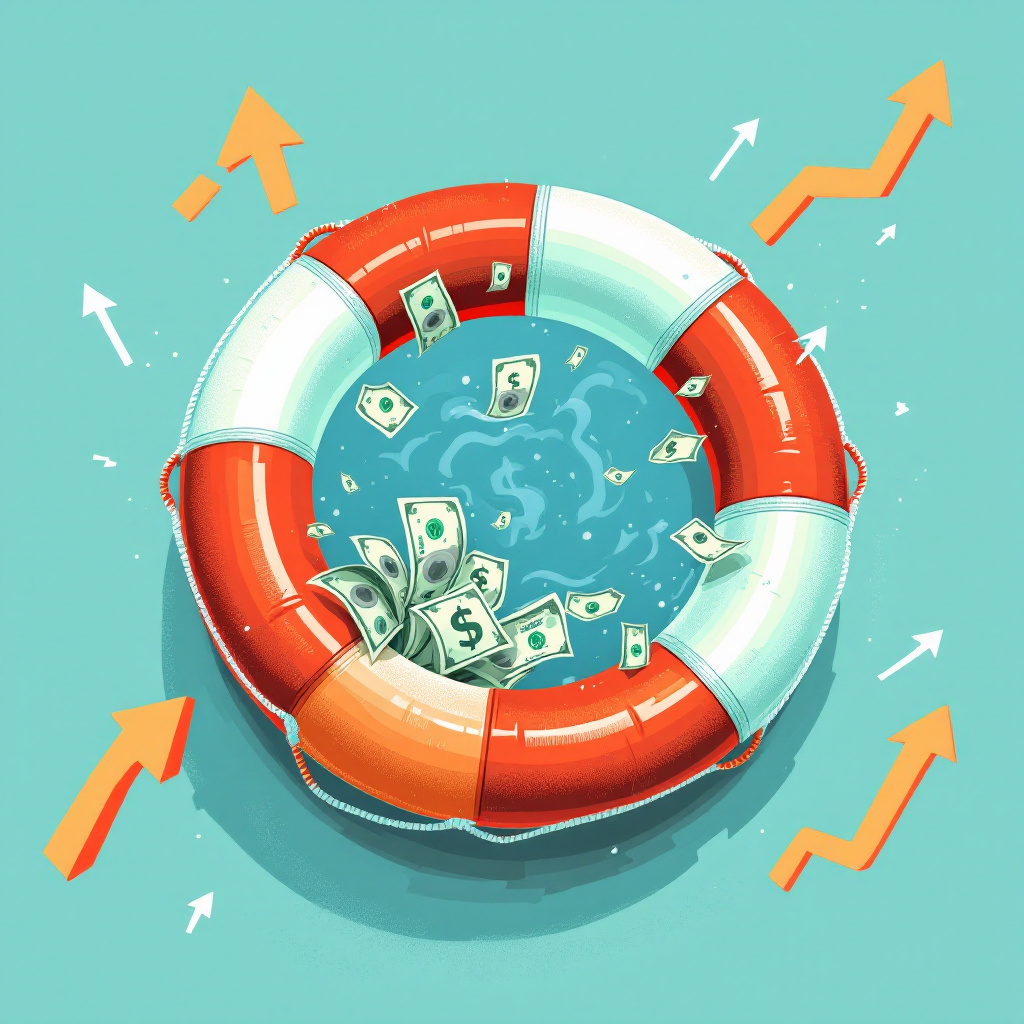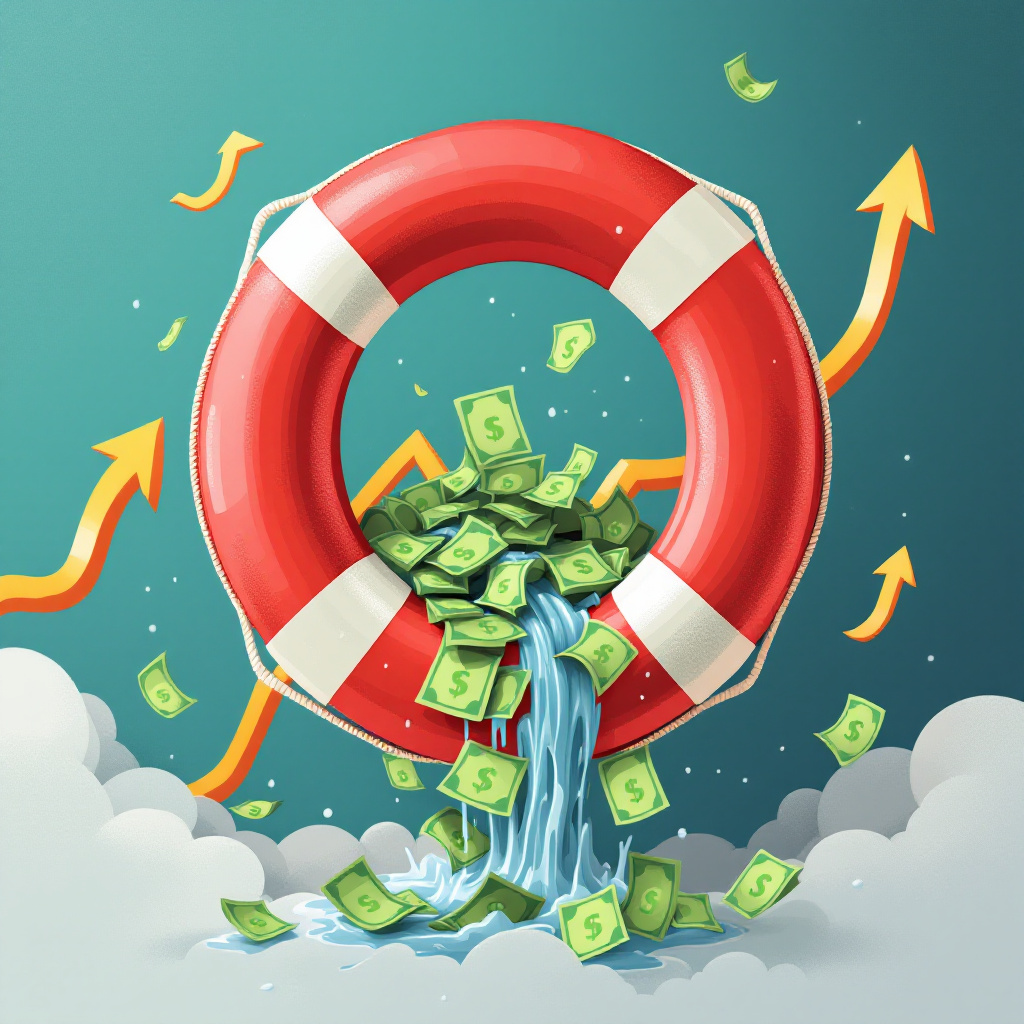The Line of Credit: Flexible Borrowing Redefined
In today’s fast-paced financial landscape, the need for flexible borrowing options is more critical than ever. Whether it’s covering unexpected expenses, managing cash flow, or funding a short-term financial gap, individuals often seek alternatives to the one-off nature of lump sum loans. Among these alternatives, a Line of Credit stands out as a viable revolving loan option packed with benefits and some hidden drawbacks. Let’s unravel the complexities of a line of credit while providing a thoughtful comparison against payday loans.
Understanding the Line of Credit
A line of credit is a financial safety net offered by banks or financial institutions granting borrowers access to a predetermined amount of money. Unlike traditional loans where you receive a lump sum, a line of credit allows you to withdraw funds as needed, up to a set limit. It’s like having a financial umbrella ready for those unpredictable rainy days.
Once approved, the borrower can draw from this credit line repeatedly, provided they stay within the agreed credit limit. The appeal lies in its revolving nature—borrow funds when needed, repay, and access again. This constant flow of manageable cash infusion is a game-changer for those who need ongoing access to funds.

Key Features of a Line of Credit
To better understand why so many are flocking to open a line of credit, let’s explore its standout features:
- Revolving Loan: Borrow, repay, and borrow again without any fuss. As long as you stay within the credit limit, it’s like having a reusable credit ticket.
- Flexible Repayment: Regular minimum payments are required to keep the account in good standing. However, the flexibility shines, allowing overpayments to reduce interest quicker.
- Interest Rates: Typically lower than payday loans, with variable rates that may change based on the prime rate, market conditions, or your credit score.
- Access to Funds: Instant and often at your fingertips through checks, cards, or online transfers.
But as appealing as these features are, not everything that glitters is gold.
Advantages of a Line of Credit
With immense versatility at its core, here are perks of opting for a line of credit:
- Flexible Use: Whether you’re paying for home repairs, consolidating debt, or managing day-to-day expenses, a line of credit is your financial Swiss army knife.
- Cost Savings: Generally, the interest charged is on the amount you draw. In contrast to other loans where the interest applies to the whole sum, you’re only paying for what you use.
- Convenience: Easily connect your line of credit to personal accounts. This setup can serve as a fail-proof backup against insufficient funds or overdraft fees.
- Potential for Building Credit: By responsibly using your line of credit, there’s an opportunity to strengthen your credit score. Consistent, timely repayments speak volumes of your commitment to creditors.
The Drawbacks in the Shadows
Even with all its benefits, a line of credit isn’t devoid of downsides:
- Variable Interest Rates: Tied often to the prime rate, that variable interest can mean fluctuating costs that catch you off guard. It might be reasonable today but skyrocket tomorrow.
- Temptation to Overspend: Easy access can become a double-edged sword, leading to spending beyond one’s means if not cautious.
- Fees and Fine Print: Be wary of fees for maintenance, transactions, or inactivity. All that glitters might hide within those lines of terms and conditions.
- Credit Standards: Qualifying for a line of credit entails a good credit history—hard cheese for those with poor or no credit.
Why Consider a Line of Credit Over Payday Loans?
Payday loans have carved out a niche for those needing quick cash, but they often bring along a heavy luggage of high-interest rates and fees. Here’s why a line of credit stands as a robust alternative:
1. Friendlier Interest Rates
Looking at payday loans, the interest often skyrockets, sometimes reaching the triple digits. In stark contrast, a line of credit typically offers manageable rates, keeping you from spiraling into debt.
2. Longer Repayment Terms
Where payday loans demand quick turnarounds, often within weeks, a line of credit offers leniency with ongoing access and extended repayment options.
3. Transparency Without the Gimmicks
Unlike payday loans where hidden fees tend to pop up like unwelcome guests, a line of credit generally maintains more transparency about potential costs if you read the terms thoroughly.
The Balancing Act: Is a Line of Credit Right for You?
Decisions, decisions! When contemplating a line of credit, weigh these considerations:
- Financial Discipline: Are you someone who can manage the freedom responsibly, avoiding the pitfalls of overspending?
- Credit Score: Check your credit standings. Knowing where you stand will help measure eligibility and negotiate better rates.
- Intended Use: Evaluate your actual need. Is it short-term spending or do you foresee looming fiscal needs?
- Emergency Backup: Contemplate utilizing a line of credit as a buffer, instead of immediate cash access.
Ultimately, a line of credit can open doors to flexible financial management but demands diligence and insight to reap its full benefits. By comprehending its ebb and flow, individuals can maneuver away from payday loans’ perilous territory into the far more promising harbor of revolving borrowing.
So, the next time life decides to throw you for a loop, remember that a line of credit might just be the lifeline you need, balancing risk with strategic, thoughtful borrowing. Got the know-how? It’s time to take the plunge!
FAQs about Lines of Credit
How does a line of credit work?
When you apply for a personal line of credit, a set amount of money is made available to you over a period of time, known as the draw period. You decide when and how much to withdraw. Importantly, you only pay interest on the funds you actually use. If you repay any portion of the funds during the draw period, your available balance replenishes, similar to how a credit card works.
What is the minimum credit score for a line of credit?
Credit score requirements vary by lender, but generally, a score within the range of 660 to 712 is likely to qualify for a line of credit. This range is considered Fair on the credit score spectrum. However, higher scores could offer more favorable terms and lower interest rates.
How to get a $50,000 line of credit?
Securing a $50,000 line of credit involves similar steps to obtaining smaller lines. Lenders typically require proof of stable income or employment, a manageable debt-to-income ratio, and a credit score that meets their standards. Showing a strong credit history can also be pivotal in the approval process and can influence the terms offered.
Can I use a line of credit to pay off other debts?
Yes, a line of credit can be used to consolidate or pay off higher interest debts. This strategy might save you money if your line of credit has a lower interest rate than your current debts. Remember, though, to maintain discipline to avoid accumulating additional debt.
Are there fees associated with opening a line of credit?
While some lines of credit might come with maintenance, transaction, or inactivity fees, many lenders offer lines of credit with minimal fees if certain conditions are met. Always read the fine print and discuss any potential fees with your lender before committing.

